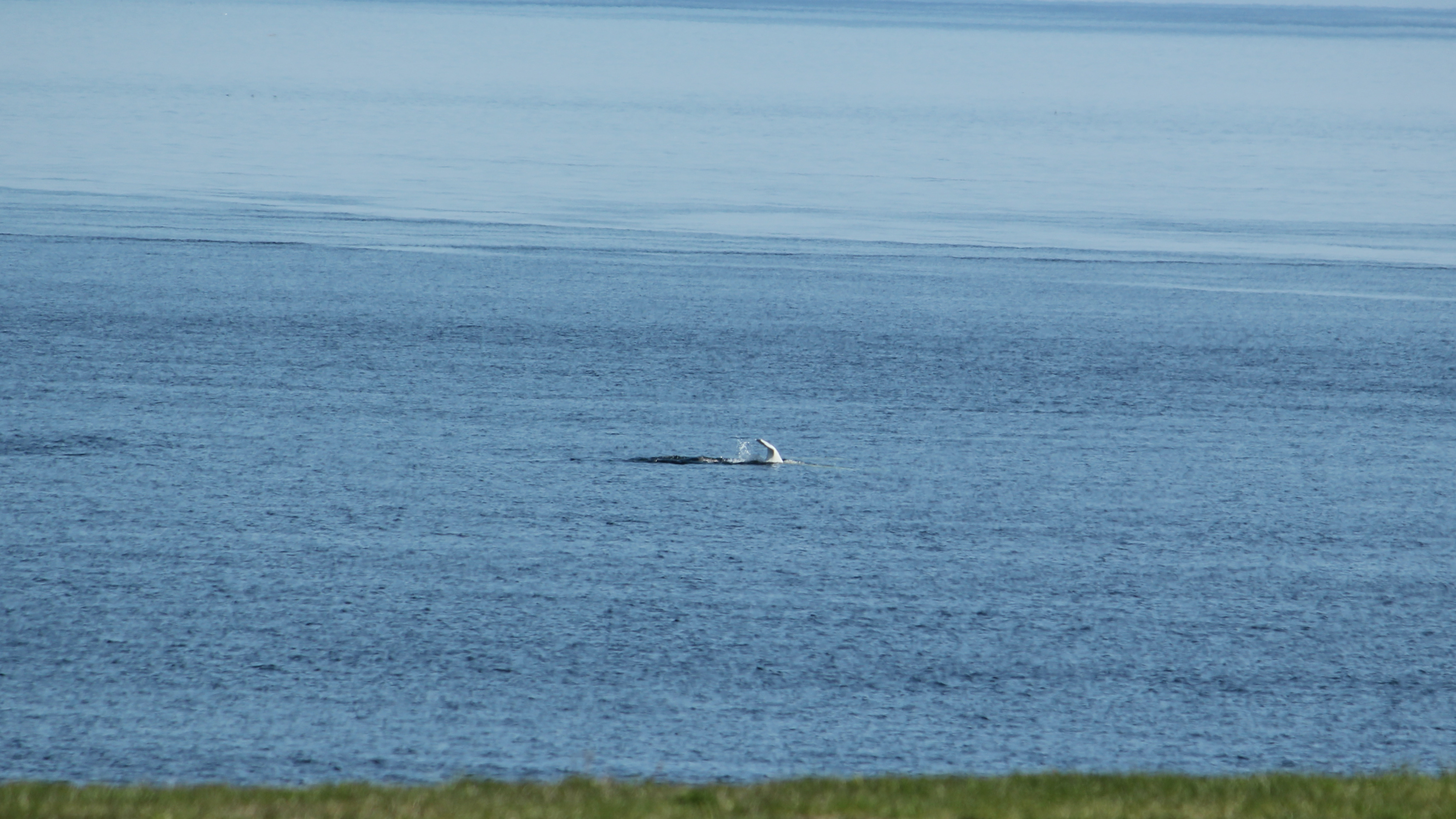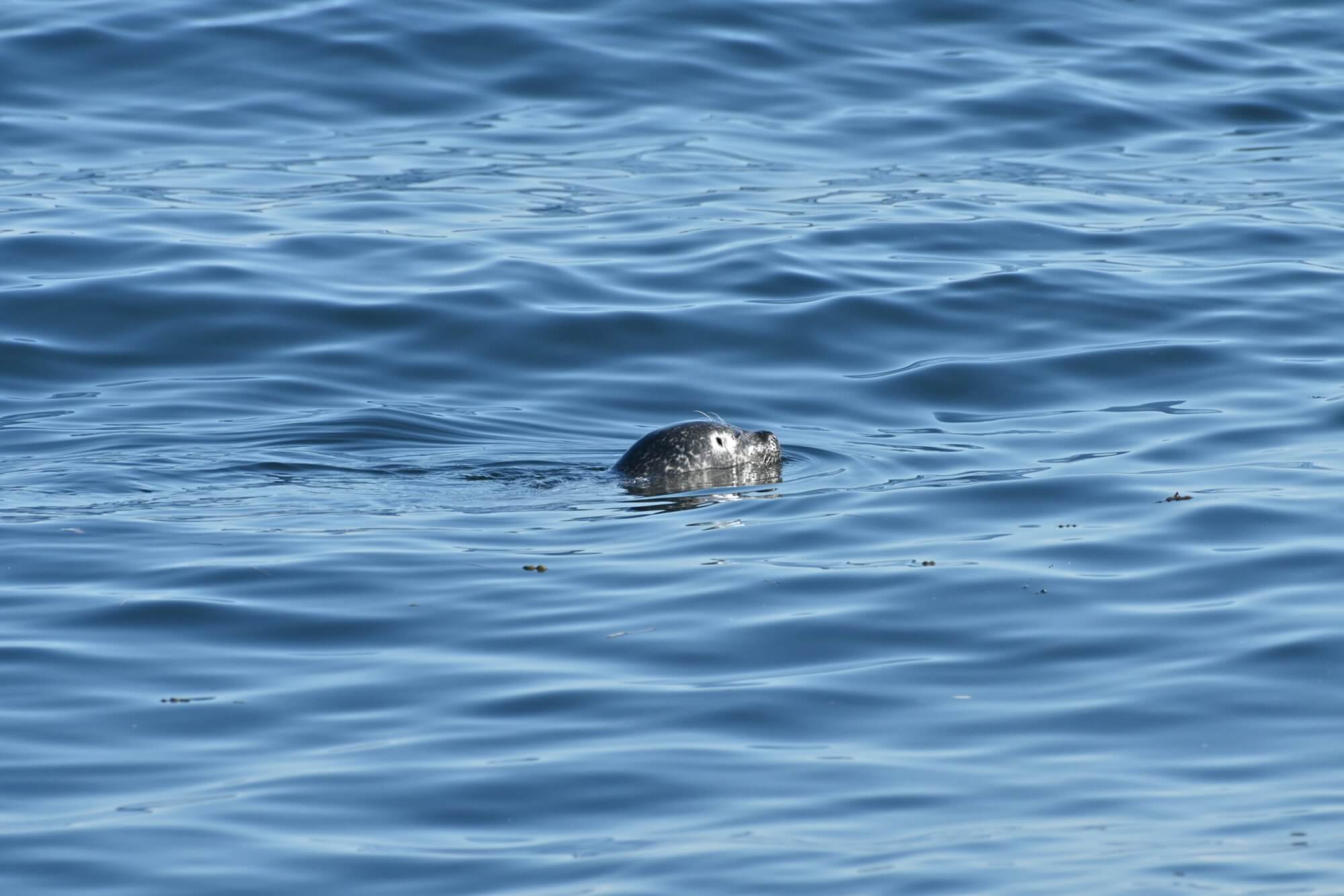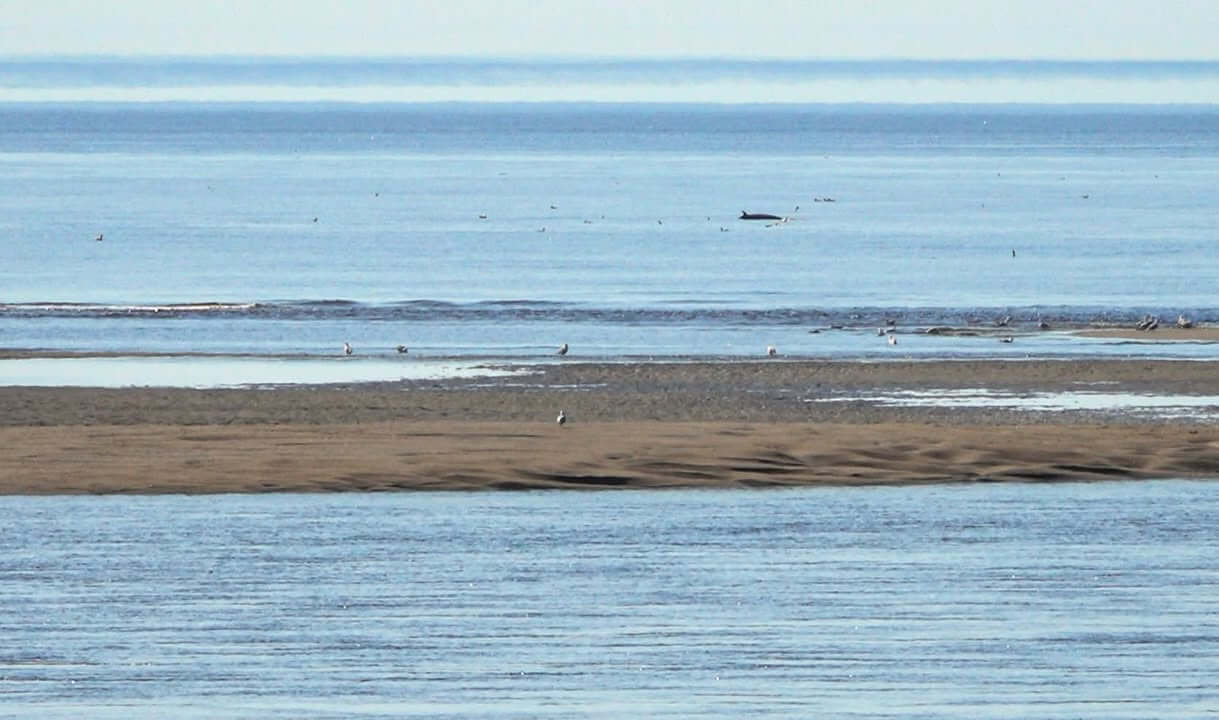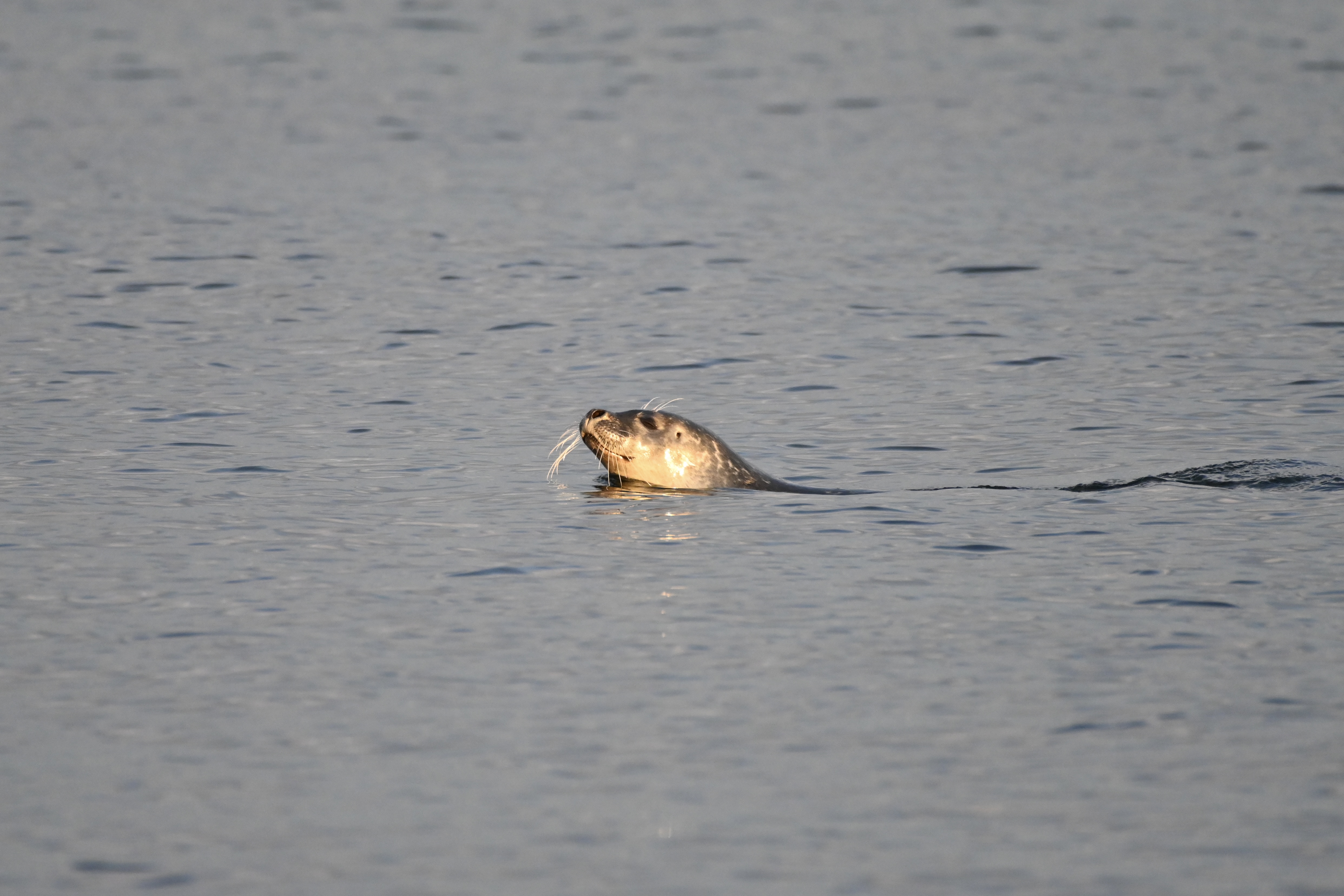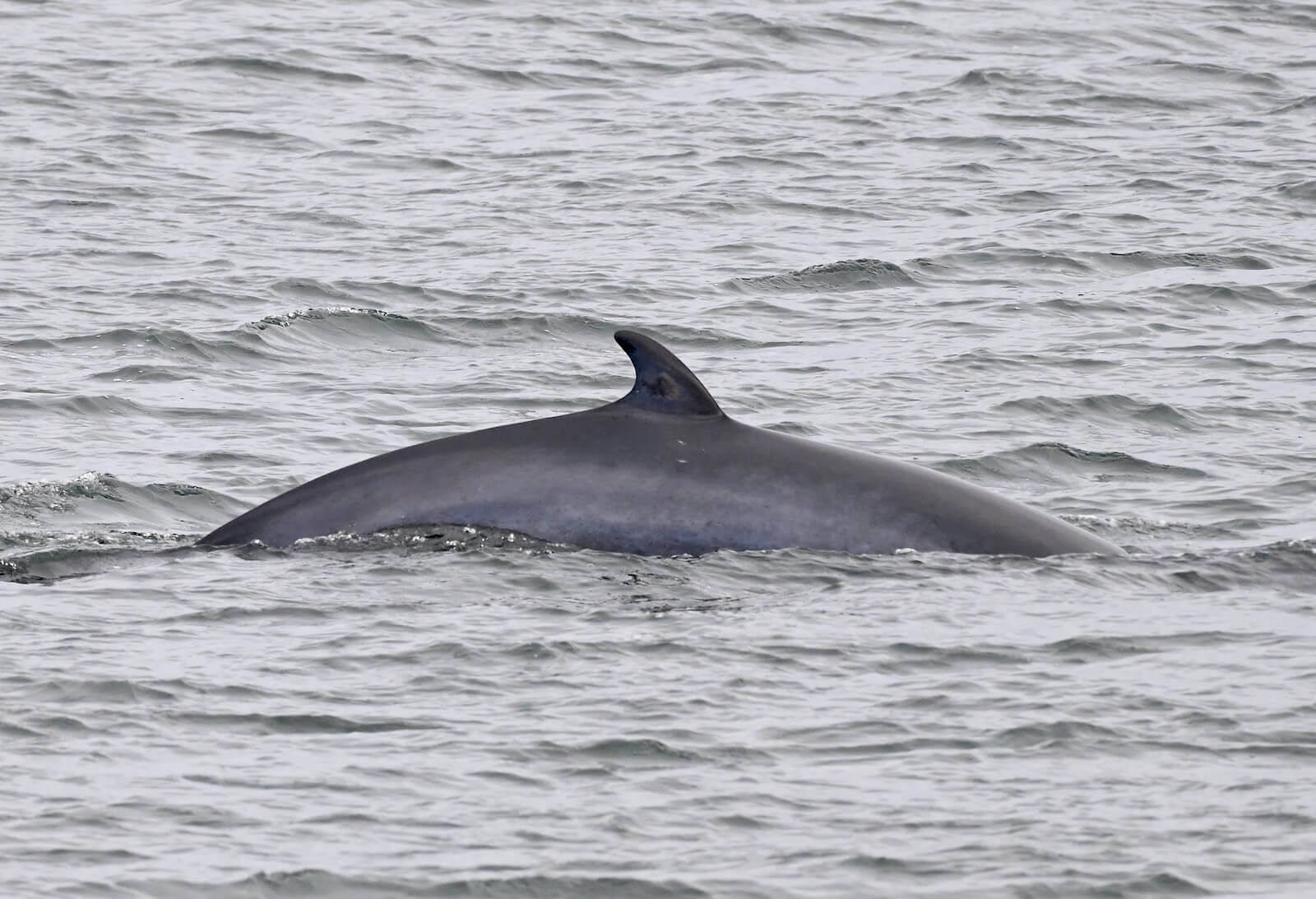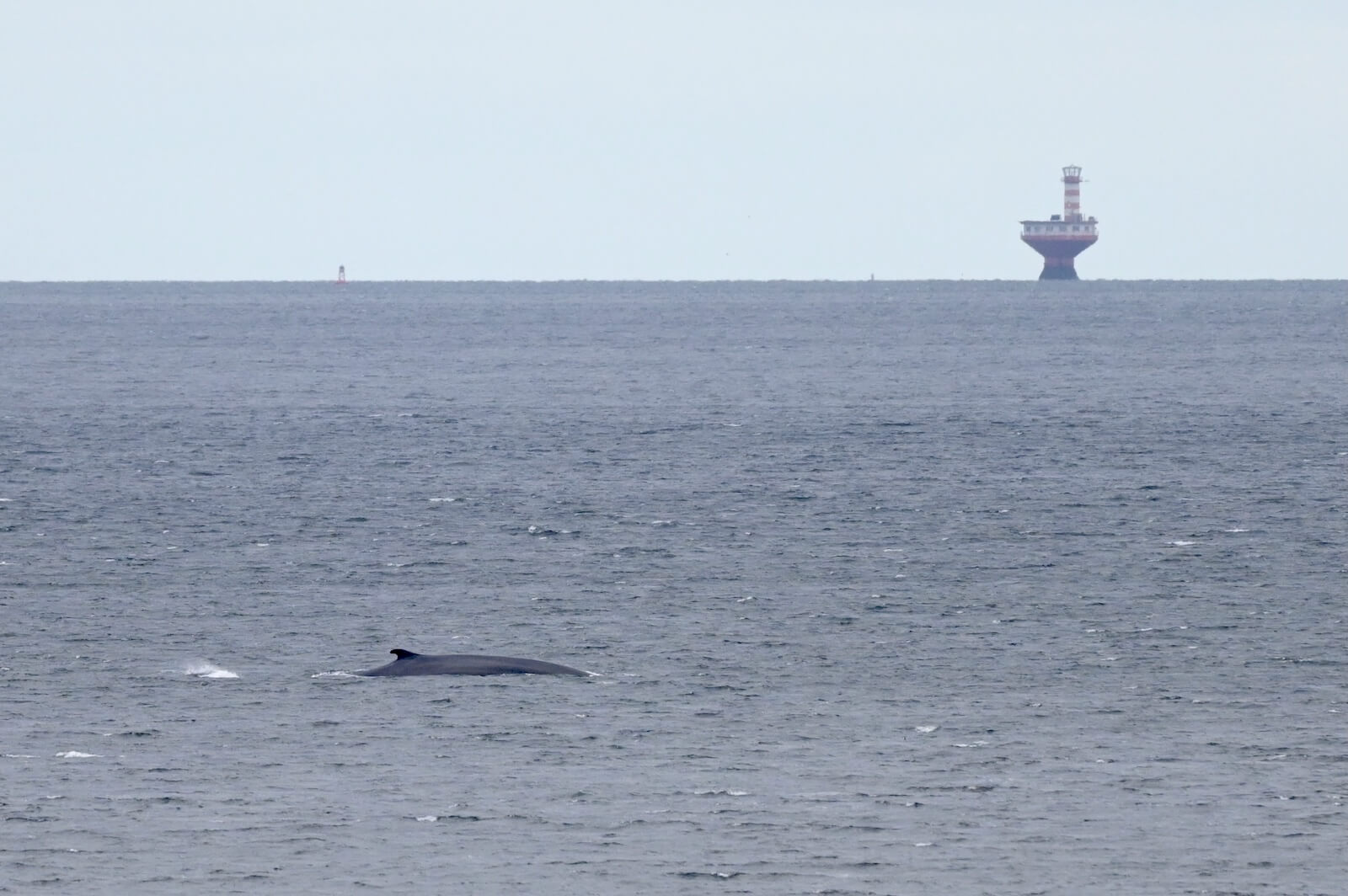In recent days, the waters of the St. Lawrence and Saguenay Fjord have been vibrating to the rhythm of marine mammals. Sightings are gradually on the rise, yet remain sporadic, from the deep waters of the Gaspé Peninsula, where powerful spouts can be heard, to the calm corners of the fjord where a handful of belugas venture.
Immaculate belugas
A dozen or so belugas, together with a single humpback, were spotted simultaneously from Les Bergeronnes. Farther south, a solitary individual was cruising through the waters of Cap-à-l’Aigle in La Malbaie, while off the coast of Saint-Siméon, another group of four or five belugas was spotted. Known for its deep, brackish waters, the Saguenay Fjord continues to regularly host these cetaceans.
One particularly rare sighting came from Godbout: Three belugas spent nearly an hour in the bay, an area rarely visited by this species. “One of them showed its tail nearly every time it dove. In over thirty years, this is only the second time I’ve seen belugas deep in the bay,” points out one delighted observer. Other sightings of the species were reported from Matane, Rimouski, and the ferry connecting Trois-Pistoles to Les Escoumins.
Minke whales, powerful spouts and blue surprises
The diversity of species observed is testimony to the ecological richness of the St. Lawrence, a complex ecosystem where cold currents translate into an abundance of krill and small fish – the perfect feast for large rorquals.
A stealthily feeding minke whale was spotted at the Marine Environment Discovery Centre on May 26. The scene was brief but moving: “We saw the tip of the tail slicing through the water,” says one observer. In Gallix, the animal appeared twice in a peaceful setting, much to the surprise of a resident sitting on the steps of the beach.
A blue whale – the largest living animal – emerged briefly between two waves in Les Escoumins. It was not seen again after that. Harbour seals, minke whales, and belugas rounded out the scene, while a harp seal was also identified in the area. In the Gaspé region, a fin whale was reported off Cap Gaspé alongside another blue whale, confirming that the large migratory whales are indeed returning to the gulf.
Bearded seal in Sept-Îles
In Sept-Îles, a bearded seal was passing through. Although this species is uncommon in the St. Lawrence, individuals – often young – are observed in its waters on occasion.
Thanks to all our collaborators!
Special thanks go out to all our observers who share their love for marine mammals with us! Your encounters with cetaceans and pinnipeds are always a pleasure to read and discover.
On the water or from shore, it is your eyes that give life to this column.
Odélie Brouillette
Guylaine Côté
Florentine
Patrice Corbeil
Pierre-Soleil Dion
Marie-Andrée Charlebois
Thalia Cohen-Bacry
Laeticia Desbordes
Stéphane Pagès
Pascal Pitre
Renaud Pintiaux
Diane Ostiguy
René Roy
Guillaume Savard
Andréanne Sylvain
Véronique Tanguay
Marielle Vanasse
J. Varin
And to all the others!
Additionally, we would like to acknowledge the following teams that also share their sightings:
Sept-Îles Research and Education Centre (CERSI)
Group for Research and Education on Marine Mammals (GREMM)
Marine Mammal Observation Network (MMON)
Quebec Marine Mammal Emergency Response Network (QMMERN)
Mingan Island Cetacean Study (MICS)
Would you also like to share your observations?
Have you seen any marine mammals in the St. Lawrence? Whether it’s a spout offshore or just a couple of seals, drop us a line and send your photos to [email protected]!


